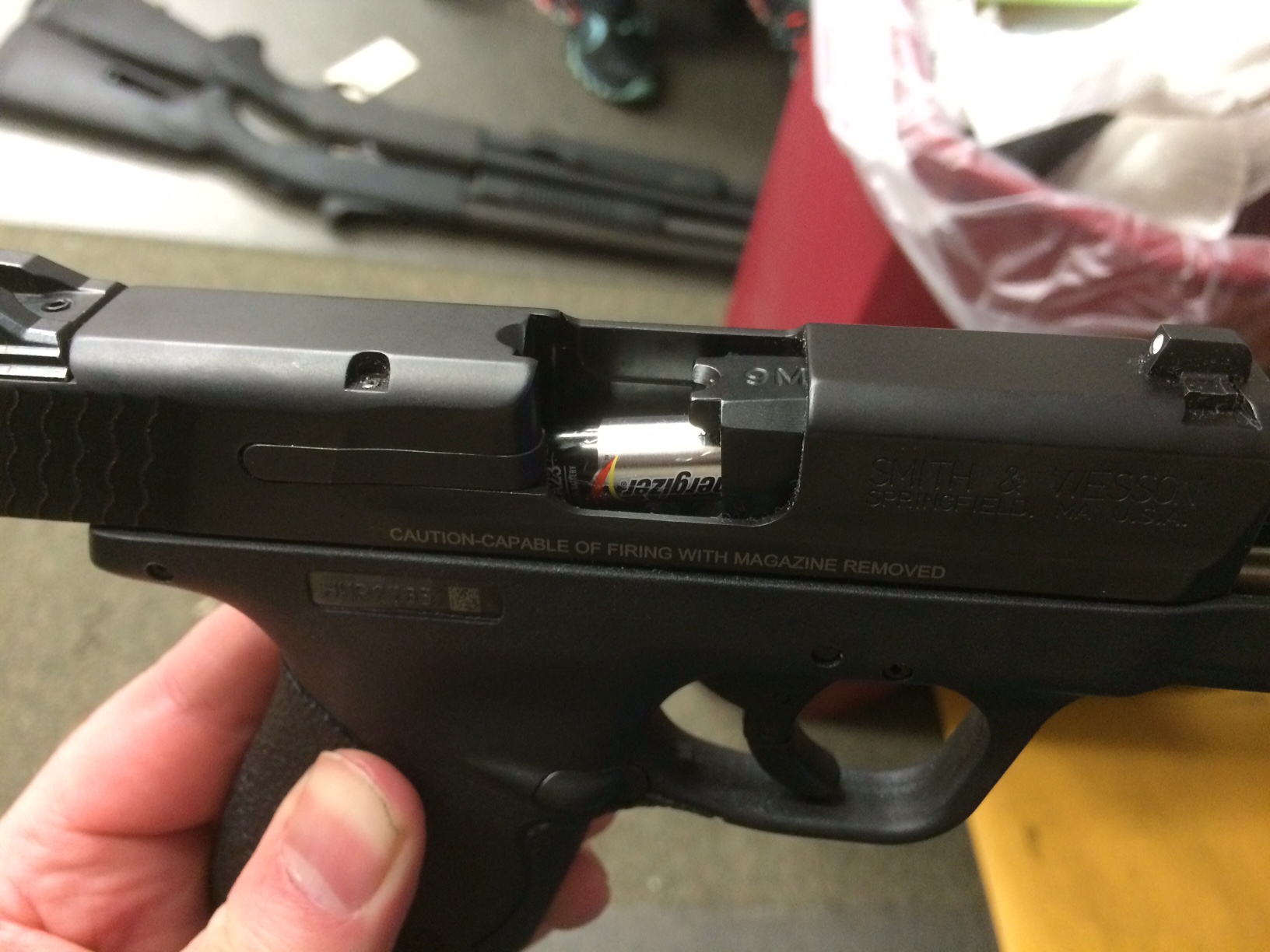Here are some remedial actions to get you back in the fight!
There you are practicing at the range, committed to your marksmanship basics, peering intently at the front sight as you control your trigger press….anddddd…..CLICK.
How can this be? You’ve done everything right. You’re shooting factory loaded ammunition. Your firearm is squeaky clean and minty fresh.
Get over it. In fact, accept it. As with any mechanical device, things can go wrong with your pistol, and they will. Your acceptance of this will allow you to stay calm and fix the issue to your best ability. Your job is to know which problems you can solve-and how.
That click you just heard is one of the most common symptoms of several issues. Some are operator induced, and some might not be-but in all cases, they’re nothing to panic over. Even better, most of them can be fixed right there, if you do your part.
Let’s take a quick look at the most likely causes of this “CLICK-not-bang,” which is essentially a failure to fire:
- Empty chamber
- Bad ammo
- Broken firing pin or other mechanical failure

In my experience, 1 and 2 cause a majority of these dreaded clicks; broken firing pins or other parts are rare (they also require mechanical repair, and are not addressed further here).
How do we end up with an empty chamber: Did you forget to load your chamber? If you are sure you loaded your chamber, did you check it? Is your magazine seated improperly? If the magazine is not inserted and locked fully into place, you won’t be able to load a cartridge into the chamber.
What about “bad ammo”? In this case, “bad” means that for whatever reason, the cartridge does not fire. This in turn can result from a wide range of manufacturing defects-whether the ammo is made in the factory or at home-and can include anything from backward primers to no powder in the case. It’s nothing to worry about; it’s rare, but it happens. (Note: In this article we are not addressing squib loads.)
So how do we fix these? In each case, our objective is to get whatever is in the chamber and not working for us (thin air, bad ammo) out, and to feed a new cartridge into said chamber.
Since a poorly seated magazine might have caused the empty chamber in the first place, before we consider doing anything else, we’ll make sure the magazine is properly inserted and secured in the pistol’s magazine well.
That will take a “tap” (or, more precisely, a “whack”) with the non-firing (“support side”) palm against the bottom of the base plate of the magazine. Do it just once, but do it with intention and force so it only takes once.
Next, take the same palm, pivot on the base plate of your magazine with fingers coming toward your body, and slide your hand to the top and rear of the slide, right where the rear sight is. (The pivoting motion prevents your hand from traveling in front of your muzzle as you move it to the top and rear of the slide.) Grasp the slide firmly in your support hand palm, thumb in your direction, four fingers on the side of the slide away from your body.
Pushing sharply with your firing hand while simultaneously pulling back with your support hand, run the slide all the way to the rear. While you’re working that slide, roll your pistol to the right-the side the port opening faces-to help whatever is in the chamber drop out. (The “racking” of the slide happens at the same time as the “roll.”)
As your slide comes to the end of its travel, and as soon as you feel the resistance at the end of the slide’s movement, release the slide with such abandon that your support hand ends up on your firing-side shoulder.
For left-handers, the process is the same-just make sure that your support hand (right hand) does not block the port in any way as you rack-and-roll, and thus allows whatever is in the chamber to eject out.
In training for real-life encounters (whether defensive or hunting), we engage the “Tap, Rack andRoll” as quickly as we can. At the range, you can practice this as often as you like, either using a purposefully unloaded chamber with loaded magazine, or dummy rounds.
Happily, the “Tap, Rack and Roll” also works to resolve some other instances when the firearm doesn’t quite work. The most common are failures of the firearm to “go into battery”-that is, the slide does not fall fully forward, and thus the action remains partially open (“out of battery”). This results in a springy trigger that neither “clicks,” nor is completely unmovable and locked (as when the safety is engaged).

Frequent causes of an out-of-battery pistol are:
- A failure to eject (often with an empty case poking out the top or side of the port, looking like a “stove pipe” -which is why it’s called a stovepipe).
- A failure to properly feed the new cartridge into the chamber. While dirty chambers and defective cartridges might be the culprits, operator error is also common. Not releasing the slide and allowing it to move forward…


